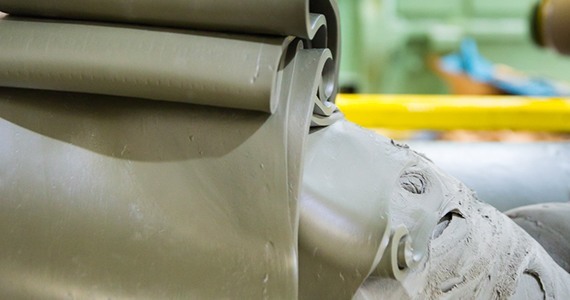RUBBER: EPDM
EPDM is an ethylene propylene diene rubber. It has good tensile strength and breaking strength. However, it is not resistant to petroleum products or concentrated acids.
Advantages of EPDM rubber:
- Very good resistance to: bad weather, heat, cold,
- Ozone, aging,
- Acids, polar solvents (water, ketones, alcohols, glycols).
- Electrical insulation
- Limits: Poor resistance to fuels, chlorinated, aromatic or aliphatic solvents, petroleum derivatives and oils.
- fire resistance.
- Flame spread is low.
Example of EPDM applications:
- Window seal
- Tires
- Playground floors
- Geomembranes
Sectors of use of EPDM:
- Automotive
- Industry
The design office is at your disposal to support you in your projects

| GENERAL PROPERTIES | min - max | |
|---|---|---|
| Hardness ShA | 30 - 90 ShA | |
| Hardness IRHD | 30 - 90 IRHD | |
| Tensile Strength | 8 - 20 | |
| Elongation at break | 100% - 900% | |
| Operating temperature | ||
| Continuous Temperature | -55 C° - 130C° | |
| Point Température | -55 C° - 140C° | |
| Resistances | ||
|---|---|---|
| Resistance to solvents | ||
| Resistance to acids | ||
| oxygen Ageing | ||
| Ozone Ageing | -- | |
| light Ageing | ||
| cold Ageing | -- | |
| heat Ageing | -- | |
Colors available :
Fireproof option.
Typical applications include accumulator bladders, cable connectors and insulators, diaphragms, gaskets, hoses and seals.
Potable water (WRC/WRAS) grades are available as well as ‘Food Quality’ mixes suitable for the food and pharmaceutical industries.
Ask for information
The company Colmant Coated Fabrics, as Data controller, undertakes to respect the law n ° 78-17 of January 6, 1978 modified relating to data processing, the files and the freedoms with regard to the automated processing of data personal information and Regulation (EU) No 2016/679 of 27 April 2016 from its application on 25 May 2018. The information collected on this form is recorded in a computerized file by Colmant Coated Fabrics to prepare your quotation or answer to a contact request. They are kept the time that our services interest you. In accordance with the Data Protection Act, you can exercise your right of access to your data and have it corrected or cancelled by contacting Colmant Coated Fabrics 44 rue louis Braille 59370 Mons-en-Baroeul or by our personal data management form.
The data and / or information on our website are indicative and are not contractual. Colmant Coated Fabrics reserves the right to modify them at any time without prior notice.

